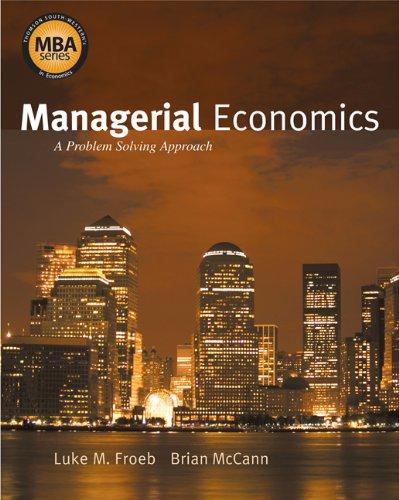Question
1) Respond to the response below: Hello Class Why is the demand for labor called a derived demand? The demand for labor in the firm
1)
Respond to the response below:
Hello Class
- Why is the demand for labor called a derived demand?
The demand for labor in the firm is not independent but instead derived from the demand for the firm's output. An increase in the demand for the firm's output results in higher demand for labor, leading to hiring more workers. Conversely, a decrease in the demand for the firm's output leads to a decrease in labor demand, causing a reduction in the workforce. For example, during the pandemic, there was a huge increase in homes when the rates were low, driving up the home values. Now that rates are going up we are seeing the demand for housing decreasing and less new builds coming onto the market.
- In the labor market, what are the firm's demand curve for labor and the workers' supply curve of labor?
The labor demand curve displays the amount of labor that employers desire to employ at a specific wage rate, assuming all other variables remain constant. Any modification made to the wage rate will lead to a corresponding alteration in the amount of labor demanded. The curve that represents the number of hours employees are willing to work at specific wage levels is known as the labor supply curve. In general, as the wage increases, employees become more willing to work longer hours. If the labor supply increases, the labor supply curve shifts toward the right. During the pandemic, nurses worked longer hours plus higher pay to benefit from high demand of their skillset during the pandemic .
- How is a firm's wage normally determined in the labor market?
The meeting point of supply and demand decides the wage rate. In a perfectly competitive market, firms accept the established wage rate. As price takers, each firm faces a horizontal labor supply curve at the market wage.
- How could Amazon decide to raise its minimum wage to $15 per hour, despite the federal minimum wage being fixed at $7.25 per hour?
The company has been facing pressure from both workers and public outcry for better working conditions. As a result the private company upped its hourly rate to better compete to retain the workforce by providing livable wages.
- What are positive and negative effects of Amazon raising its minimum wage to $15 per hour on its employees, total revenue, and other companies and their employees?
One positive effect of Amazon raising its minimum to provide livable wages to its employees as well I have a better brand image to the world. A negative effect of Amazon's upping caused a chain reaction in the workforce driving up others' wages to compete against competitors for retaining staff.
Step by Step Solution
There are 3 Steps involved in it
Step: 1

Get Instant Access to Expert-Tailored Solutions
See step-by-step solutions with expert insights and AI powered tools for academic success
Step: 2

Step: 3

Ace Your Homework with AI
Get the answers you need in no time with our AI-driven, step-by-step assistance
Get Started


